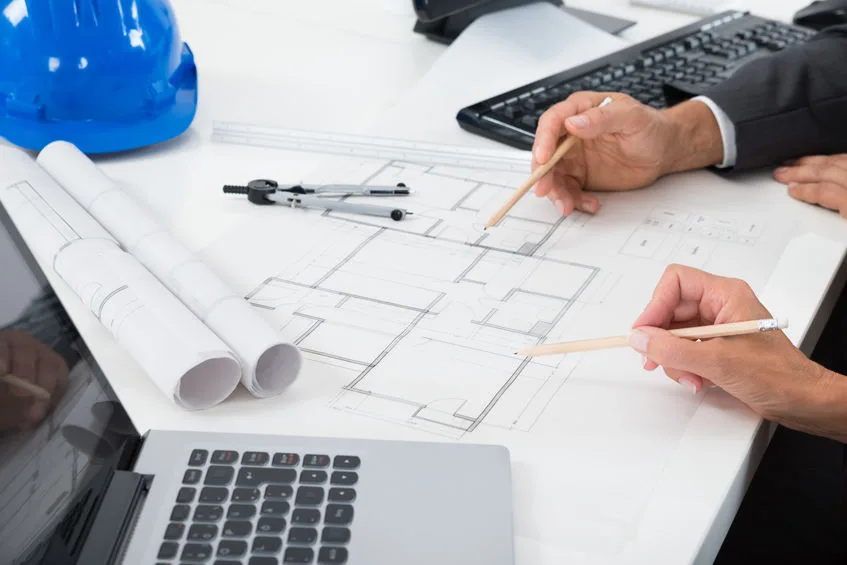Comprehending the Diverse Career Paths Available for Aspiring Architect
As an aspiring Architect, you have a world of profession paths waiting for you. Each course supplies special obstacles and opportunities to apply your creativity and technological knowledge. Whether you're attracted to standard architecture or the subtleties of lasting design, there's a specific niche that straightens with your interests. Recognizing these diverse alternatives can form your professional journey, however which instructions will you choose to check out first?
Typical Design: Designing Structures and Frameworks
Typical design focuses on designing structures and structures that mix capability with visual allure. Your styles can reflect social heritage, showcasing neighborhood practices while satisfying modern-day requirements.
You'll establish abilities in preparing, model-making, and website analysis, permitting you to picture and communicate your concepts successfully. Engaging with customers, you'll require to recognize their vision and equate it right into viable layouts.
Furthermore, building codes and sustainability methods are crucial in your work, ensuring your frameworks are ecologically pleasant and secure. As you expand in your occupation, you'll locate opportunities in residential, commercial, and even repair jobs, each offering special challenges. Accepting conventional design leads the way for a fulfilling occupation that admires the past while shaping the future.
Urban Preparation: Forming Neighborhoods and Public Spaces
As a hopeful Architect, you can play an essential role as a metropolitan coordinator, changing how neighborhoods work and interact. By employing neighborhood involvement strategies, you'll assure that citizens have a voice fit their atmosphere. And also, incorporating sustainable design principles will aid develop rooms that not only meet today's demands but also secure the future.
Role of Urban Planners
While numerous could believe of engineers as the single dreamers behind structures, city planners play a necessary function in forming the wider landscape of neighborhoods and public rooms. By collaborating with different stakeholders, you'll aid develop parks, transportation systems, and household areas that promote social communication and access. Your know-how in spatial style and community dynamics enables you to visualize future growth while preserving social heritage.
Community Interaction Methods
Efficient community interaction techniques are important for city coordinators to ensure that the voices of homeowners are listened to and valued in the preparation procedure. To promote significant discussion, you must prioritize open discussion forums and workshops where area participants can express their ideas and problems. By proactively listening and incorporating comments, you'll produce rooms that reflect the neighborhood's demands, ultimately leading to even more successful and sustainable metropolitan settings.
Sustainable Layout Concepts
When designing urban areas, integrating lasting layout principles is essential for creating settings that flourish both environmentally and socially. You must begin by concentrating on power performance, utilizing materials that decrease waste and promote recycling. Consider incorporating green spaces, like parks and yards, to enhance biodiversity and boost air quality. Promoting walkability and public transport can lessen reliance on cars, promoting a healthier community.
Designing with water conservation in mind is likewise vital-- consider rainfall gardens and absorptive surface areas to manage stormwater. Entailing area members throughout the preparation procedure assurances that the rooms you produce satisfy their requirements and motivate social interaction. By embracing these concepts, you'll add to dynamic, sustainable city landscapes that profit everybody.

Landscape Style: Creating Lasting Exterior Environments
As you check out landscape architecture, you'll uncover important style concepts that produce beautiful and practical outdoor spaces. Lasting techniques play a crucial function in making sure these settings thrive while minimizing ecological influence. Plus, you'll discover a selection of job chances that enable you to make an actual difference in just how individuals engage with nature.
Style Concepts in Landscape
Recognizing style concepts in landscape design is crucial for developing sustainable outside settings that harmonize with nature. You'll need to consider components like proportion, balance, and scale to ensure your styles really feel cohesive and inviting. Including indigenous plants not only boosts biodiversity yet likewise reduces water use, making your landscape durable. Think of the flow of room and exactly how individuals communicate with it; pathways and seating areas should invite expedition and leisure. In addition, take note of seasonal adjustments, designing with materials that match the surroundings year-round (Architect). By prioritizing sustainability and appearances, you can produce outside spaces that improve the area and promote health. Accepting these principles will certainly set a strong foundation for your profession in landscape architecture.
Lasting Practices Review
Lasting methods more info in landscape design not only focus on looks but also prioritize ecological health and wellness and resource preservation. You can create spaces that promote soil wellness, such as using natural products and exercising permaculture principles. Ultimately, these methods ensure your designs benefit both people and the setting for years to come.
Career Opportunities Exploration
With a strong foundation in sustainable practices, landscape architecture uses a variety of profession courses that permit you to make a significant effect on the environment. Urban planners typically work together with landscape engineers to produce green rooms in city setups, boosting city livability. If you're passionate concerning education, consider ending up being a landscape design instructor, inspiring future generations.
Lasting Style: Concentrating on Eco-Friendly Practices
As you explore your occupation in design, embracing eco-friendly methods can establish you apart in an affordable area. Lasting design concentrates on creating buildings that minimize ecological influence while improving passenger health. By integrating renewable materials, energy-efficient systems, and sustainable structure techniques, you'll contribute to a greener future.
Begin by obtaining knowledge of green certifications like LEED or BREEAM, which can reinforce your credentials. Think about just how all-natural light, ventilation, and thermal efficiency can optimize style. Team up with designers and ecological specialists to innovate remedies that reduce waste and conserve sources.
Do not neglect the relevance of neighborhood involvement-- appealing regional stakeholders can influence layouts that integrate with the atmosphere. As clients significantly prioritize sustainability, your competence in eco-friendly practices will certainly not just attract projects yet likewise satisfy your enthusiasm for responsible style. Welcome this essential element of the occupation, and enjoy your occupation prosper.
Historic Preservation: Securing and Bring Back Cultural Heritage
While you commence on your building journey, take into consideration the necessary function of historical preservation in preserving our cultural heritage. This area concentrates on the security and repair of considerable buildings, websites, and frameworks that tell the tales of our past. By participating in historical conservation, you'll aid protect the building tradition that forms community identity.
As a historical preservation Architect, you'll examine historical significance and examine the condition of structures. You'll work closely with conservationists and chroniclers to assure genuine repair methods are employed. This occupation path enables you to mix creative thinking with research study, enabling you to make solutions that respect original materials and craftsmanship.
Your work not just contributes to sustainability by reusing existing buildings however also promotes a click here sense of pride within neighborhoods. Embracing this path will assist you come to be a guardian of background, maintaining the stories and looks that improve our lives.
Interior Style: Enhancing Indoor Spaces
Historic preservation and interior style both share a commitment to improving the built environment, yet they concentrate on various elements. While historic conservation emphasizes keeping a framework's historic and social worth, interior architecture zeroes in on enhancing indoor areas for functionality and aesthetics.
As an ambitious Architect, you'll locate that interior design permits you to mix imagination with technical skills. You'll develop areas that not just look good however additionally promote convenience and efficiency. This area includes comprehending exactly how light, shade, and materials engage within a room, influencing state of mind and usability.
You'll deal with different tasks, from residential homes to business workplaces, ensuring that each atmosphere meets the demands of its owners. By prioritizing user experience, you can change insides right into practical and inspiring areas, making a significant influence on just how individuals communicate with their environments. Embrace the opportunity to improve indoor atmospheres and form the way individuals work and live.
Industrial Style: Combining Functionality With Looks
Commercial design plays a necessary duty in producing products that flawlessly blend aesthetics with performance, making sure that what you utilize everyday is not just visually appealing but also practical. As an ambitious Architect, you might involve yourself in this field, concentrating on developing whatever from furnishings to consumer electronics. Your job entails recognizing customer needs, materials, and making processes, enabling you to develop innovative solutions that boost everyday experiences.
In industrial style, you'll often team up with producers, designers, and marketing experts, guaranteeing that your styles are not just beautiful but also practical. You'll find out to balance type and feature, focusing on usability without giving up design. By honing your abilities in sketching, 3D modeling, and prototyping, you'll be well-appointed to bring your ideas to life. This career path supplies a vibrant environment where creative thinking satisfies functionality, making it a satisfying option for architects curious about shaping the products of tomorrow.
Often Asked Questions
What Educational Credentials Do I Need to Come To Be an Engineer?
To end up being an engineer, you'll need a professional level in style, commonly a Bachelor's or Master's. Additionally, you'll have to complete an internship and pass the Architect Enrollment Examination to exercise legitimately.
Are There Qualification Needs for Different Architectural Job Paths?
Yes, there're accreditation requirements for various architectural paths. Architect. You'll need to pass exams, complete teaching fellowships, and often seek specialized training, relying on your picked emphasis, like landscape design, urban style, or historical conservation
What Software Abilities Are Crucial for Designers Today?

Exactly How Can I Gain Practical Experience While Studying Design?
You can acquire useful experience by interning at architectural firms, taking part in layout competitions, offering for area jobs, or teaming up with classmates on real-world jobs. These chances boost your skills and build valuable connections in the sector.
What Work Opportunities Exist Outside Traditional Design Firms?
You can discover numerous job opportunities outside conventional style companies, like city planning, indoor style, landscape design, building and construction administration, property growth, or also functions in sustainability consulting. Each offers unique challenges and benefits.
Whether you're attracted to traditional design or the nuances of lasting design, there's a specific niche that straightens with your passions.When creating metropolitan spaces, integrating sustainable style concepts is crucial for developing atmospheres that prosper both ecologically and socially.As you explore landscape style, you'll find essential style concepts that produce gorgeous and practical exterior areas.Recognizing layout concepts in landscape design is important for developing lasting outside atmospheres that harmonize with nature.In commercial design, you'll frequently team up with designers, marketing experts, and manufacturers, making certain that your designs are not only stunning but also practical.